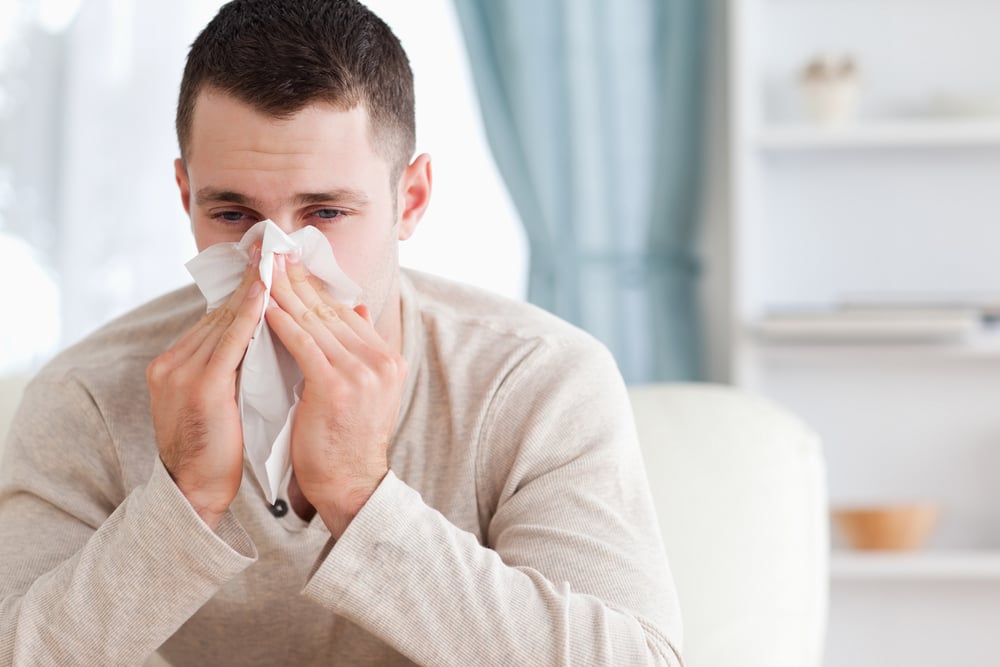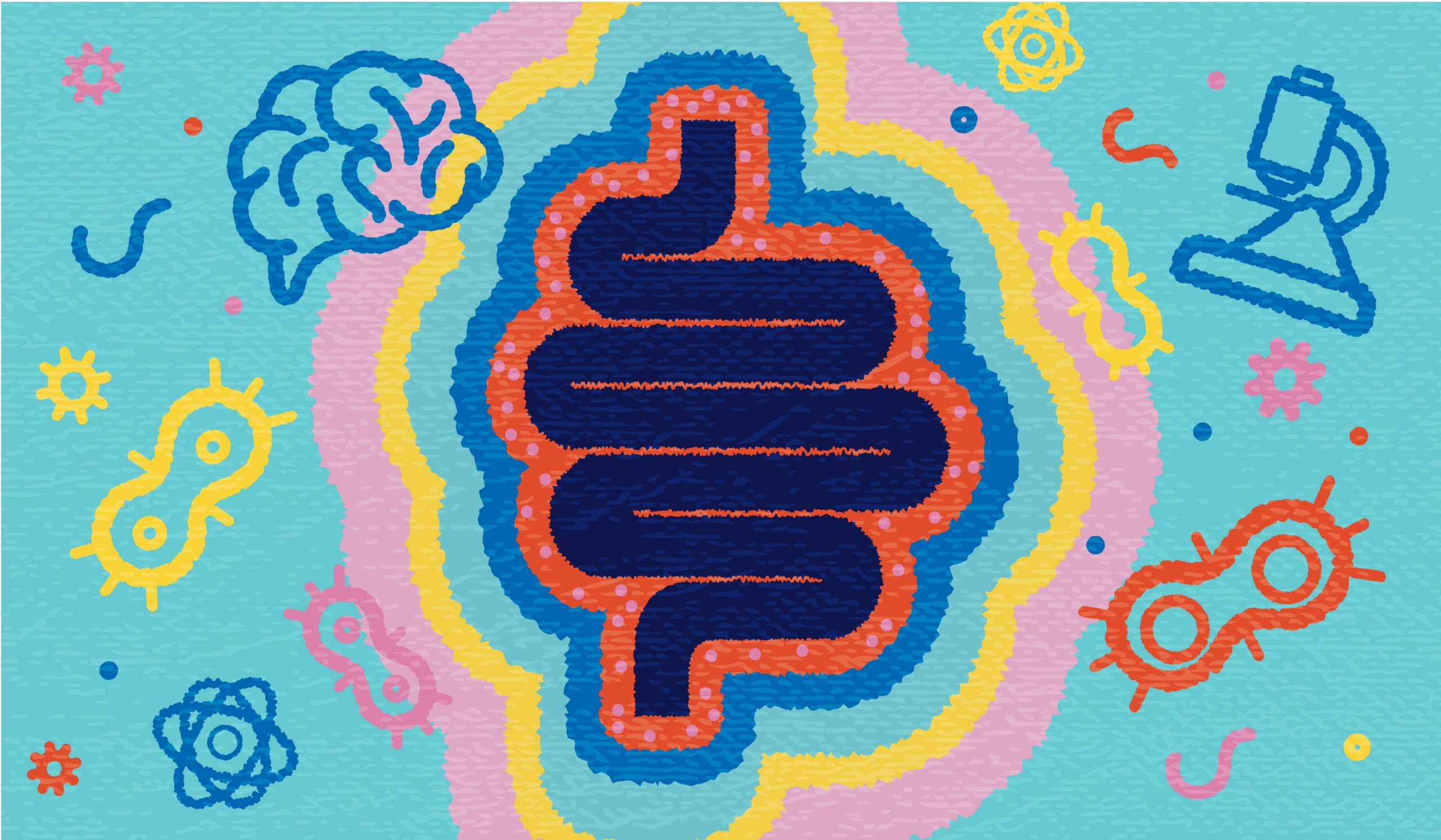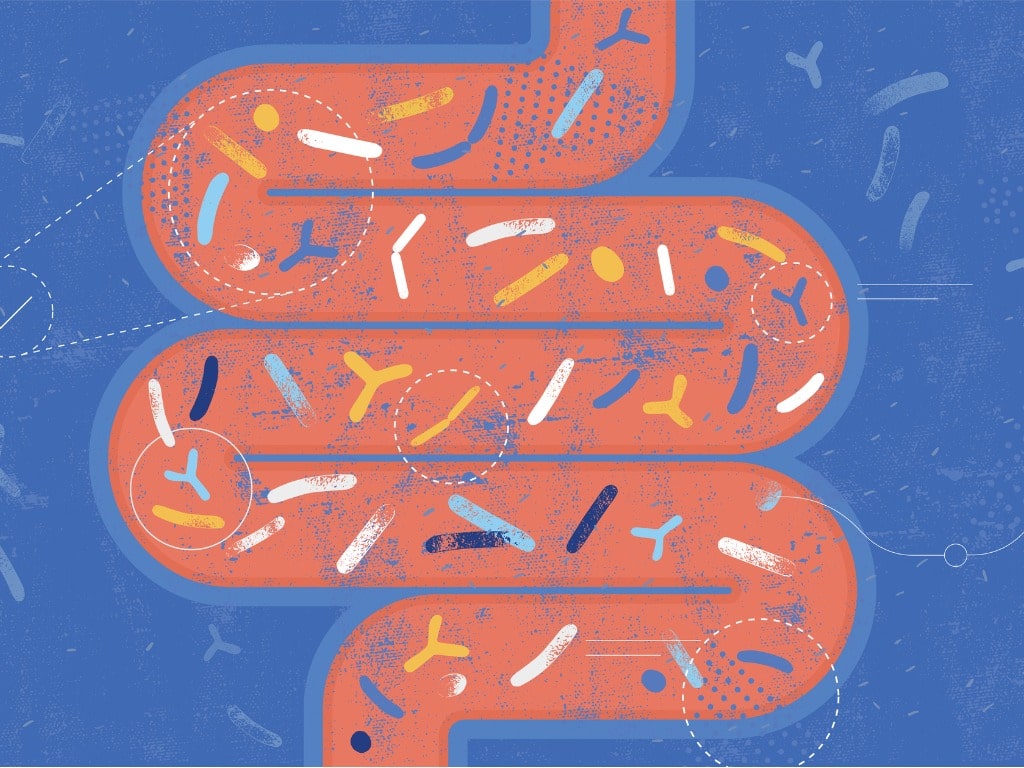Coconut oil has been used for millennia as a catch-all health remedy.
One of the active derivatives of coconut oil that gives it such unique health properties is monolaurin.
Monolaurin is one of the rich ingredients in breastmilk that help protect the infant from immune challenges. Your body happens to make some monolaurin when you consume coconut oil.
Coconut oil is predominantly comprised of lauric acid – a medium chain triglyceride that shares the same properties known to MCT oil.
A little of the lauric acid will be converted to monolaurin by enzymes in the body. You can also supplement with monolaurin directly to concentrate its benefits.
What is Monolaurin?
Monolaurin is a unique medium chain MONOglyceride. It has the same metabolic properties of medium chain triglycerides (“MCT oil”), yet it is the “monoglyceride” form that yields immune-active effects in the body.
Other names include glycerol monolaurate, glyceryl laurate, or 1-lauroyl-glycerol. You will find these chemical names listed on a number of cosmetic products & they are the names sometimes used in research studies.
Monolaurin is not directly found in coconut oil – it is something your body makes from the lauric acid that is found in coconut oil. You will not get the same potency of benefits by consuming coconut oil as you would with directly supplementing with monolaurin.
Monolaurin is a more potent antimicrobial than lauric acid. Lauric acid will be antimicrobial to surfaces – but once you consume of it, only a small percentage will be converted to monolaurin. The monoglyceride is the form that is necessary for antimicrobial activity in the body.
You can safely take monolaurin supplements if you have a sensitivity or allergy to coconut, coconut oil or other compounds found in coconut oil like salicylates.
You can still cook with coconut oil or take a tablespoon here & there as you wish – while also taking supplemental monolaurin. Both coconut oil & monolaurin have their own health benefits – with some overlap.
Because of its antimicrobial properties, monolaurin not only reduces the load of bacteria, viruses, yeast, fungi & some parasites – it also works nicely as a natural preservative & an alternative to parabens and other synthetic preservatives in commercial cosmetic formulations.
Today, researchers are looking at monolaurin to help line surgical instruments to prevent hospital-acquired infections including methicillin resistant Staphylococcus aureus. Many are still learning about the unique benefits of using monolaurin as an oral supplement too.
Monolaurin is used by health professionals as an immune supplement for a number of protocols for autoimmunity, gut health, brain health, metabolism & as a natural antimicrobial for occasional flu, sore throat, or other infection.
 Natural Flu Remedy
Natural Flu RemedyThe flu virus is an enveloped virus – meaning that it has this fatty capsule that surrounds it.
This envelope helps a virus hide from our immune system & it also involved in the viruses ability to roll into a cell and replicate its genetic material.
Monolaurin naturally dissolves, solubilizes, or breaks down this viral envelope. It also has a unique ability to disrupt signaling mechanisms & prevent viral assembly – which in high enough doses can help disrupt non-enveloped viruses like the cold virus or HPV virus.
Due to these unique properties, monolaurin has been included in evidence-based discussions on natural management of flu outbreaks.
I think Zinc and Vitamin D status have critical roles in immune preparedness due to their modulatory roles of the immune system. Zinc has been referred to as the “gatekeeper of the immune system” and Vitamin D is like a referee keeping balance between the production of different immune cells.
I use Zinc Copper Balance to support zinc. I then like Vitamin ADK Complete as vitamin A has immune-protective properties and D works in tandem with K for other functions of the body.
If Zinc and Vitamin D levels are deficient, you can take all the extracts in the world and you would still not be able to optimize immune responses to your ability.
Herpes Viruses (Epstein Barr Virus, Cytomegalovirus, Human Herpes Virus-6 (HHV-6), Herpes simplex virus I and II (HSV-1, HSV-2). Herpes zoster (Shingles and Chicken Pox), and other Enveloped Viruses
Herpes viruses have their own independent presentations, but also activate secondarily due to autoimmune disease, high stress, or other immune compromised states. Being low in Vitamin D3 might also increase your susceptibility.
If you were to measure samples from a hundred people, up to 90% or more would show the activity of one or more of these “stealth infections”.
As we age, or undergo a period of high stress or immune compromise, these viruses can reactivate, sometimes with more virulence than the initial infection as in the case of Herpes zoster & Shingles.
Both the Weston A Price Foundation and Dr. Andrew Weil recommend monolaurin, and specifically as a natural remedy for genital herpes & cold sores.
I broaden the recommendation to any “enveloped” virus. A simple wikipedia search of a virus will generally tell you in the first few paragraphs if it is “enveloped/encapsulated” or “non-enveloped/naked”.
For instance, HIV is an “enveloped” virus – and monolaurin has been demonstrated to lower viral levels in animal & human studies (1; 2; 3).
Which brings us to the next section…
Naked or Non-Enveloped Viruses (Cold/Rhinovirus, HPV, Parvovirus, and others):
Monolaurin may also help inhibit the replication of non-enveloped viruses by blocking signal transmission, as well as viral attachment & assembly.
In my experience, it’s best to use a higher dose to trigger mechanisms against non-enveloped viruses, 3000mg three to twelve times per day.
Higher doses, while not always necessary, will increase the chance that monolaurin will interfere with viral attachment & assembly to cellular membranes.
Because less dosage is needed to kill or inhibit growth other bacteria, fungi & viruses – start low & work your way up even if your goal is to use a high dose of monolaurin.
The detox from other infections (known as “die-off” or “Herxing”) may be too strong in the short-term to tolerate higher doses comfortably.
- Candida Fungal Infections Monolaurin is also adept at breaking down the cell wall of Candida-related fungal infections.Since monolaurin’s effects are mediated through the bloodstream, it has potential to help with both intestinal & systemic yeast overgrowth.
What also makes monolaurin unique is that it is a potent biofilm disruptor.
Microbes like Candida will “hide” in an invisibility cloak like matrix known as biofilm. This biofilm protects and feeds the organism and can hide the organism from our immune system as well as outside agents.
Monolaurin not only breaks down Candida biofilm, but will also help break open & kill Candida cells directly (4; 5).
Candida can also embed itself in the intestinal mucosa with fungal “root” structures known as hyphae.
I am using Monolaurin in combination with a bee propolis & undecylenic acid combination known as Megamycobalance by Microbiome Labs to help disembed these fungal roots & support healthy yeast balance (6; 7). A combination of berberine-containing herbs can also be supportive. I use Berberine Reset by Doctor Alex Supplements or Berberine Complex by Integrative Therapeutics.
It is another reason to start low and work your way up with both products of course – but it’s a potent one-two punch.
In individuals having trouble with Candida die-off. I use a high-cellulase & protease enzyme formula known as Candidase PRO for more complete anti-fungal support.
SporeBoost IG, Megasporebiotic, RestorFlora, and HU58 High-Potency Bacillus subtilis are popular probiotics commonly used in yeast balance protocols.
Spore probiotics and healthy probiotic yeast help to physically crowd out yeast, but also produce antimicrobial compounds as a natural part of their metabolism that support yeast control.
Check out our Megasporebiotic Resource Page for everything you need to know regarding the very popular spore probiotic and the clinical trials that have been conducted.
Sporeboost IG is a set of different spore probiotic strains that help support diversity and can work alone or in conjunction with Megaspore.
Staph and Strep Infections
Staph and strep infections are commonplace & can become scary.
They are implicated in a wide range of infections including infections of the skin, mouth, throat, and the heart tissue. They are also central bacteria in the antibiotic resistance threat. For instance, MRSA is a virulent, & antibiotic-resistant form of staph.
Monolaurin has been demonstrated to kill Staph and Strep infections, including MRSA & non-MRSA Staph.
You also get systemic support for skin and mouth bacteria by supplementing with monolaurin orally.
Streptococcus mutans is recognized as the primary cause of dental cavity formation & a trigger of other bacterial growth & eventual gingival & periodontal disease. It is a gram-positive bacteria – easily susceptible to monolaurin – including Streptococcus biofilm (8).
Remember, dental plaque is a bacterial biofilm!
I often combine UltraLaurin by Inspired Nutrition with Oregano Oil when it comes to bacterial infections to cover my bases & keep in mind that any infection may still require conventional medical therapy.
I recommend keeping these products on hand so that you can begin support right away if an infection is triggered so that you’re not waiting 2-3 days for it to arrive in the mail.
I still encourage individuals to talk to their doctors and have a prescription ready if necessary.
Monolaurin can be taken alongside conventional antibiotics if needed unless otherwise directed by your doctor.
Lyme Disease, Chronic Fatigue, and Fibromyalgia
 Monolaurin is one of the few substances known by man to inhibit all morphological forms of Lyme.
Monolaurin is one of the few substances known by man to inhibit all morphological forms of Lyme.Lyme is notorious for hiding in biofilm, or converting to a round/cyst form that is impenetrable by other agents.
Lyme disease often initiates immune imbalances that invites a host of co-infections that also coincide with monolaurin’s antimicrobial properties.
The co-infections correlated most with Lyme disease include EBV, CMV, HSV, Candida, H. pylori, and others! Monolaurin helps support your body’s ability to combat these most common Lyme co-infections.
Monolaurin is recommended by top experts in many fields including Lyme, Autoimmune thyroiditis (Graves’ and Hashimoto’s), Small Intestinal Bowel Overgrowth, Chronic Fatigue Syndrome & Fibromyalgia.
All of these syndromes are related to monolaurin-susceptible stealth microbes in the body.
Monolaurin and Ketones:
A lesser-known benefit of monolaurin is its ability to support ketone levels in the body.
When you consume monolaurin – it circulates in the bloodstream & is metabolized in a delayed fashion over 8-12 hours.
Monolaurin is not excreted or detoxified out of the body. Instead, it is turned into energy in the form of ketones.
Many of the microbes mentioned above also affect the brain and have been implicated in the inflammation behind every neurodegenerative disease like Alzheimer’s, Parkinson’s, or general cognitive decline. Reducing the viral, bacterial, or fungal load on the body will help reduce the development of these inflammatory disorders.
Ketones can help enliven damaged neurons and give them a break from excess sugar (9; 10). In Alzheimer’s, the brain learns to block sugar from being taken into the cells.
The now insulin-resistant cells do not function optimally. Ketones provide a separate energy source for brain neurons & has been demonstrated to support declining cell function.
It’s important to take monolaurin at least twice a day, preferably three times a day for best effect!
Alternatively, you can also use MCT oil at a teaspoon to tablespoon taken 1-3 times per day to support ketone production, brain health, metabolism, and some immune support from breakdown products similar to monolaurin. Caprylic acid is a well-regarded yeast support that is found in MCT oil.
I use MCT/Butyrate Liquid by Douglas Labs, and you can mix in smoothies or take on its own. Start with 1 teaspoon before jumping to a tablespoon (3 teaspoons = 1 tablespoon) as too much will irritate the gut and may cause loose stools – and sensitivity may vary per individual.
Similar to MCT oil, taking monolaurin three times a day keeps the antimicrobial properties in your blood for the entire day – and it gives you a steady source of ketones – independent of a ketogenic or low-carbohydrate diet.
For non-monolaurin immune support, Microbiome Labs has MegaViron for more immediate immune support for periods up to 15 days. I also use Vitamin ADK Complete and Zinc Copper Balance. It is important to maintain vitamin D3 and zinc levels before you’re sick. Their main probiotic focus is spore probiotics with the most popular being Megasporebiotic, yet Bifidobacteria like those in TrubifidoPRO help support overall immune balance.
Monolaurin Dosage:
Start low and work your way up with monolaurin. This is due to the “die-off” or “detox overload” that can be triggered when first killing microbes.
When you kill microbes, they can flush or release their toxins & cell debris into your blood. Your immune system can be sensitive to this release in these early hours & days of supplementation. Your liver also needs time to clear out the wastes or insulate them safely.
Monolaurin Side Effects:
If you haven’t heard about monolaurin, it’s likely because it’s mostly distributed by health offices and not your traditional retail stores & vitamin shops.
Some shops are careful to carry monolaurin because without proper dosage instruction – it can trigger flu-like or “detox”-related symptoms like headache, loose stools or body aches.
Follow proper intake instructions & always work up monolaurin levels.
Monolaurin Benefits Summary:
- Monolaurin is a unique medium chain fat that your body makes when consuming coconut oil. The body’s conversion is inefficient & so supplementing is best. Supplementation is safe for those with coconut allergies. Monolaurin will also not negatively affect cholesterol ratios.
- It shares the same properties as medium chain triglycerides (MCT oil, Capric acid, or Caprylic acid), yet it is monolaurin that is directly active as an antimicrobial without a conversion process by the body. Like other medium chain fats, monolaurin is metabolized into healthy ketones that the body & brain can use as fuel.
- Monolaurin has potent antiviral, antibacterial, anti-fungal, & anti-parasitic properties against a wide range of microbes. It works by lysing the cell, interfering with signal communication on the membrane, disrupting biofilm formation, or preventing microbe attachment or assembly to your cells.
- When supplementing with monolaurin, start low and work your way up as you may experience “die-off” symptoms from taking too much too soon. Work up to a 1 full teaspoon three times a day of the pellets (equivalent to 3000mg three times per day if using monolaurin capsules). Some monolaurin protocols may call for taking more as long as higher intakes do not trigger die-off.
- Monolaurin is available as an oral supplement known as Ultimate Monolaurin in the form of pellets, as well as monolaurin capsules from Ecological Formulas. For capsules, we use Natural Cure Labs Monolaurin which is the most affordable capsule version for the potency that we have found.In my practice, I most commonly use UltraLaurin by Inspired Nutrition that is available in 7oz jars and 21oz bags.




